Samsung OLED 48 S90D or S94D is the smallest model in this series and we had the opportunity to check out what it can do. At first glance, it’s clear that it handles details in dark scenes excellently, as expected from an OLED. It’s worth mentioning that the 48-inch version differs from the larger models. The brightness is slightly lower, and the panel has a satin finish instead of a glossy one. During the day, this may affect image perception. However, regardless of the variant, OLED always makes an impression. The black depth is incredible and the contrast makes even the most demanding scenes look cinematic. When it comes to high-quality materials, this TV literally shines – bright elements in dark frames literally jump off the screen. The factory colour settings could be better, but after calibration, the TV reveals its full potential. While watching from different spots in the room, we noticed that the wide viewing angles work well – the image remains sharp and full of details, even when viewed from the side. The Tizen system proved to be user-friendly – apps like Netflix and Prime Video were at our fingertips. A few less popular apps are missing, which could be a downside, but it wasn’t an issue for us. The interface itself operated smoothly, with no stutters. When watching sports and dynamic films, the TV showed what it’s capable of. The 144 Hz panel eliminates motion blur, and fast actions are displayed smoothly and without interruptions. What is gaming on this TV like? It’s simply pure enjoyment. Low input lag and support for 144 Hz made every gaming session responsive and fluid, whether we were playing dynamic FPS titles or more laid-back strategy games. Samsung OLED 48' S90D/S94D is a great choice for those looking for a smaller TV with excellent picture quality and extra features for gamers. It’s not without compromises, but in everyday use, it performs really well. For us, it’s a compact device that proves that size doesn’t always matter.
- Matching (Score)
- Our verdict
- TV appearance
- Where to buy
- Contrast and black detail
- HDR effect quality
- Factory color reproduction
- Color reproduction after calibration
- Smoothness of tonal transitions
- Image scaling and smoothness of tonal transitions
- Blur and motion smoothness
- Console compatibility and gaming features
- Input lag
- Compatibility with PC
- Viewing angles
- TV efficiency during daytime
- Details about the matrix
- TV features
- Apps
- Playing files from USB
- Sound
Samsung S90D / S94D 48" (WRGB OLED) vs LG OLED C5
Direct compare
Check the best price offer:
LG OLED C5S90D / S94D
C5 / C54 / C5ELB / C51
Available screen sizes: 48”

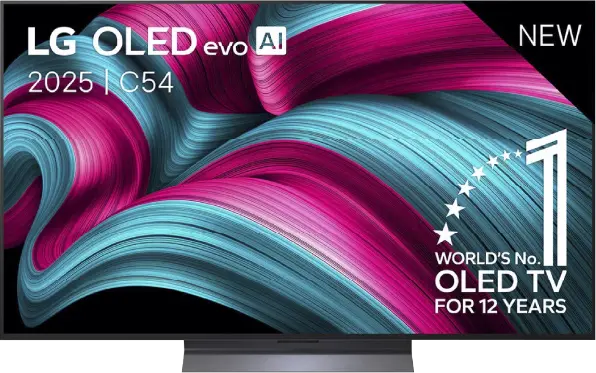
Panel type: WRGB OLED
Resolution: 3840x2160
System: Tizen
Model year: 2024
Complete the survey to find out the result

Panel type: WRGB OLED
Resolution: 3840x2160
System: WebOS
Model year: 2025
Complete the survey to find out the result

Overall rating
7.9
8.2
Movies and series in UHD quality
8.0
8.5
Classic TV, YouTube
8.6
8.9
Sports broadcasts (TV and apps)
8.4
8.6
Gaming on console
9.4
9.4
TV as a computer monitor
8.6
8.6
Watching in bright light
5.4
6.2
Utility functions
7.4
7.9
Apps
8.7
9.1
Sound quality
6.8
7.2
Complete the survey to find out what fits your preferences
Advantages
Perfect black
Great for 4K HDR content
Excellent for gamers - 144hz, HDMI 2.1, low input lag.
Advanced and smooth Tizen system
Multifunctional solar remote
Great black and endless contrast thanks to the OLED panel
Above-average brightness (for an OLED TV)
Nearly reference-quality picture after calibration
Full suite of features for gamers: 4xHDMI 2.1, low input lag, HGiG, VRR and more
Very good motion smoothness – 144 Hz OLED panel
Intuitive and modern WebOS system
Convenient Magic remote control with a gyroscope
Disadvantages
Worse brightness than larger counterparts
Missing Dolby Vision and DTS:X
Different versions of the remote in derivative models – it's hard to predict which version we'll get
Average reflection damping – this may be an issue under very bright light
No support for DTS:X – an external amplifier is required for full support of this format
Our verdict
LG C5 is a very successful continuation, and in several aspects, even a step forward compared to last year's C4 model. The biggest change is the significantly higher brightness – for the first time in the history of the C series, the barrier of 1000 nits has been exceeded, which significantly improves the quality of HDR effects. Both movies and TV shows look more dynamic as a result, and bright scenes finally have the appropriate “shine.” After calibration, the picture quality is almost reference-level, and one gets the impression that we are dealing with equipment much more expensive than its price suggests. C5 is also one of the best choices for gamers – four full HDMI 2.1 ports, low input lag, support for VRR, G-Sync, and correctly implemented HGiG. Additionally, the 144 Hz panel makes not only gaming but also watching sports pure pleasure. The convenient WebOS system and the Magic remote with cursor control functionality deserve a mention as well – everything works smoothly and intuitively. This is a television that you simply want to use.
However, there are a few minor reservations. This year, LG decided to abandon support for DTS codecs, which may be troublesome for people using physical media and Blu-ray film collections. It's also worth noting the confusion regarding the different versions of the remote – depending on the model designation, we may receive a completely different remote than the one we held during our tests. Despite these few comments, LG C5 is a television that makes an excellent impression in almost every respect. Brightness, colours, gaming features, fluidity of the image, and overall build quality make it one of the best OLEDs in its class.
TV appearance







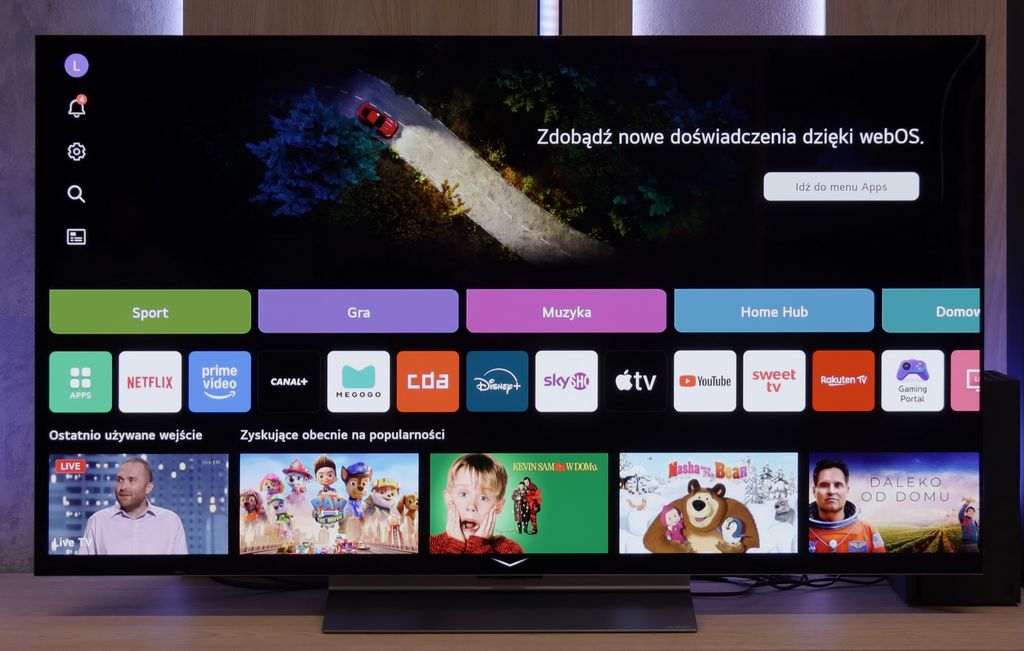
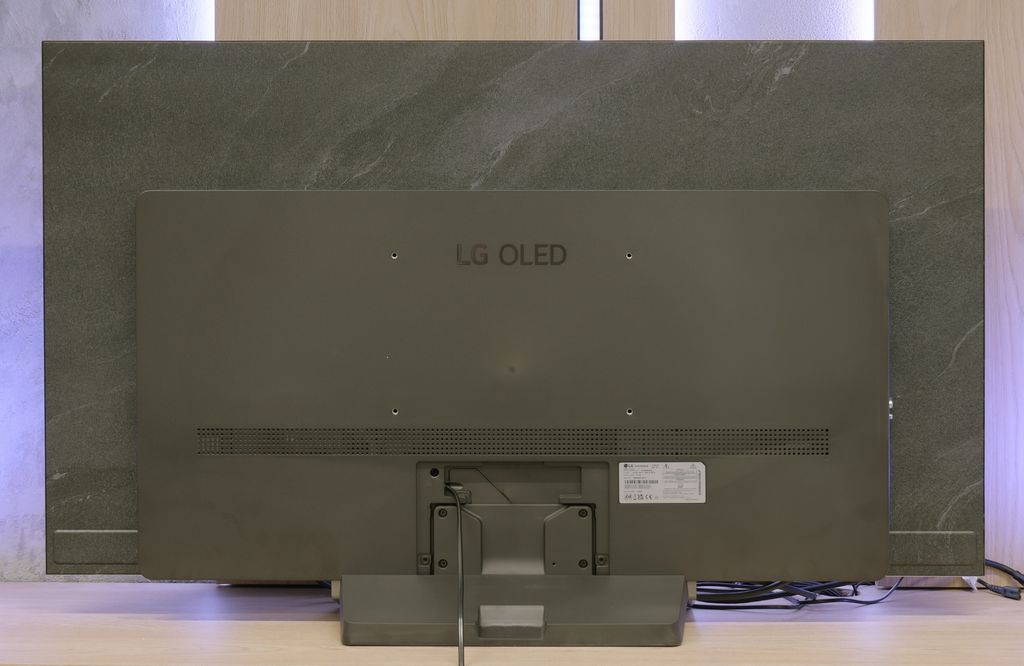
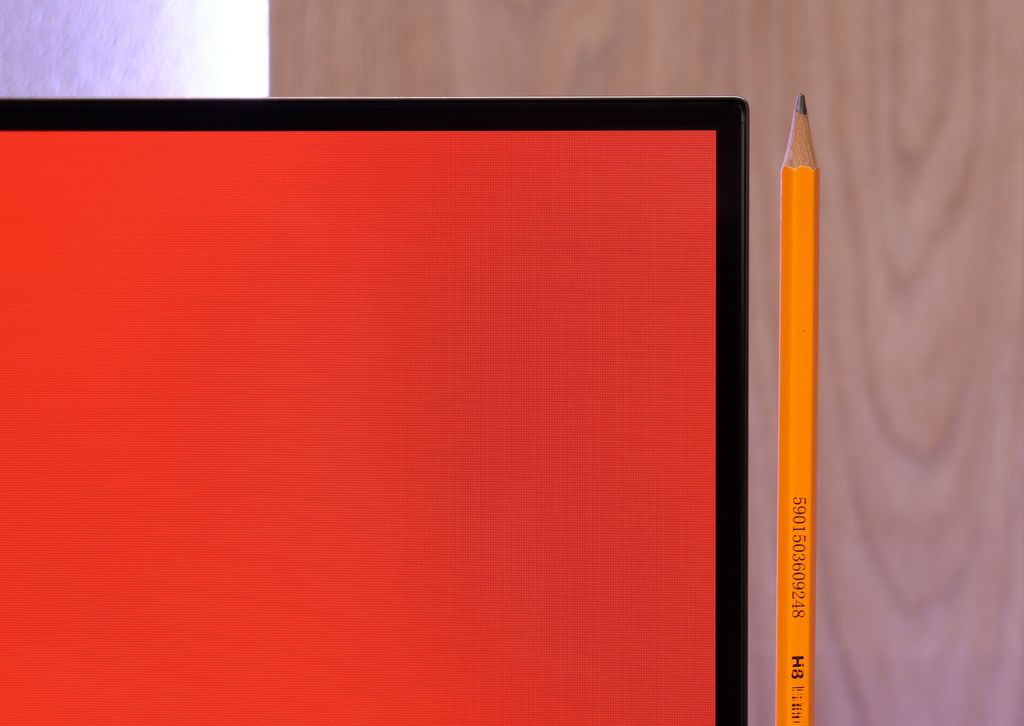
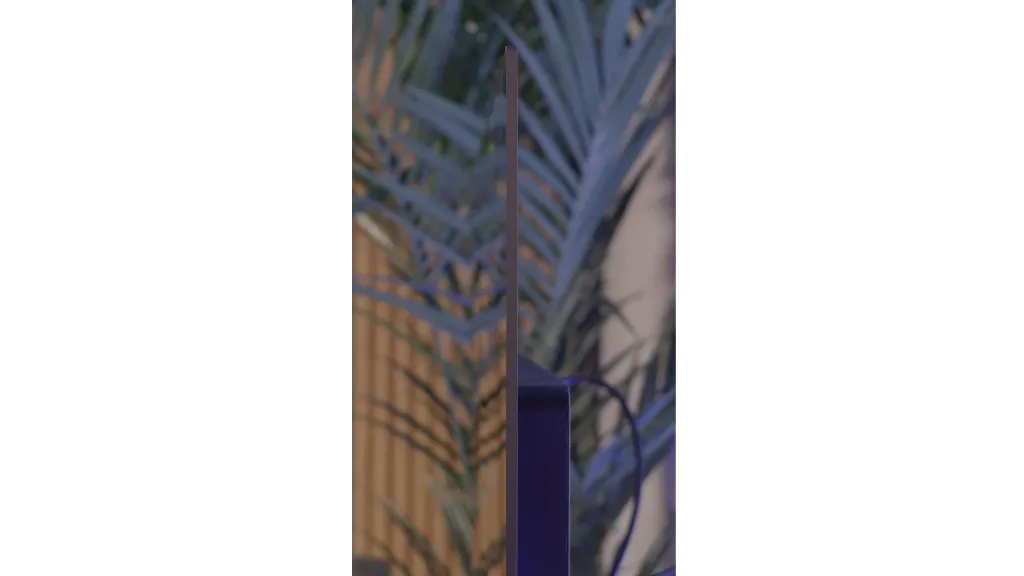
Where to buy
Contrast and black detail
10/10
10/10
Contrast:

Result
∞:1

Result
∞:1

Result
∞:1

Result
∞:1

Result
∞:1

Result
∞:1

Result
∞:1

Result
∞:1

Result
∞:1

Result
∞:1
Halo effect and black detail visibility:

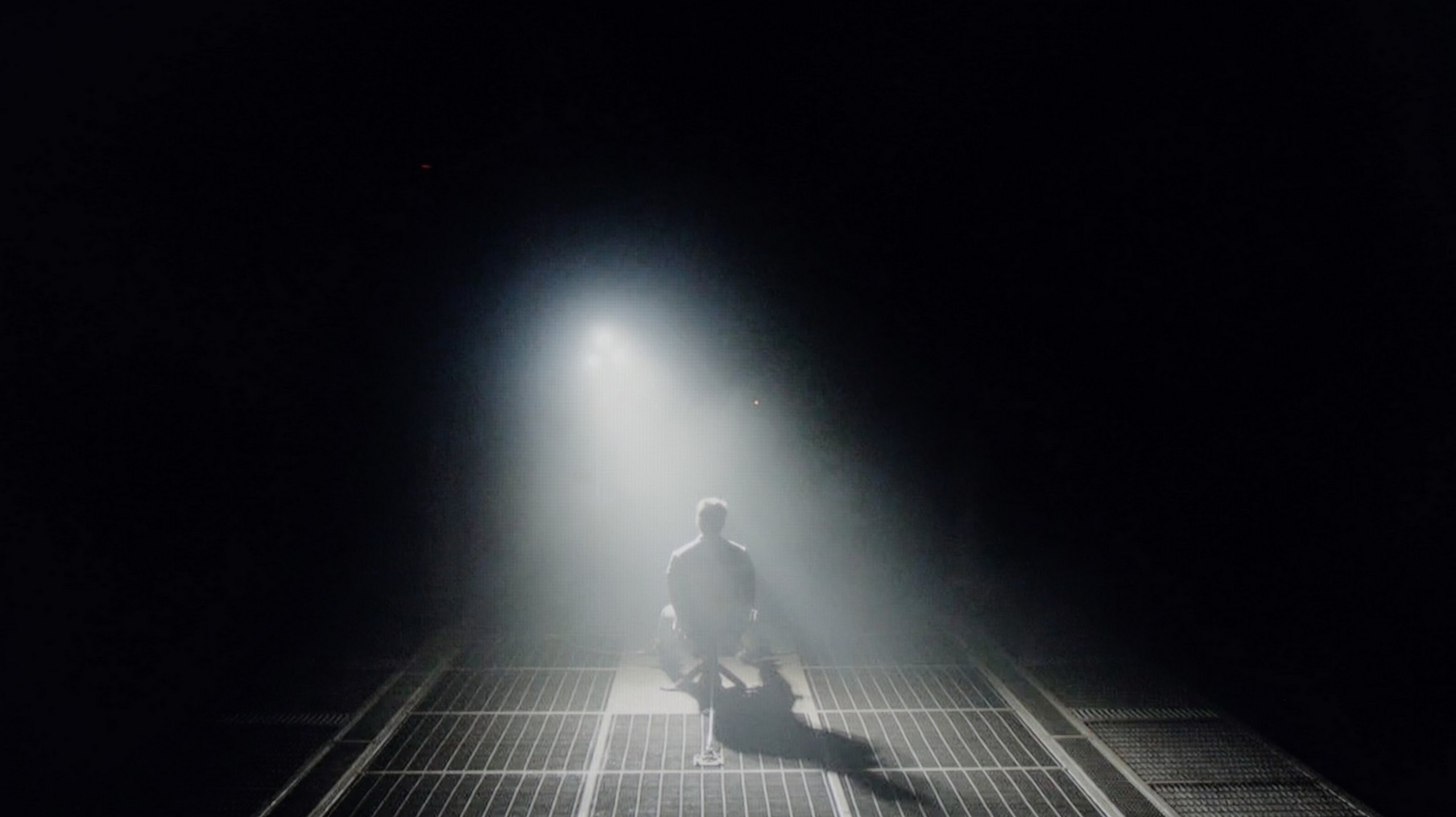
Samsung OLED 48 S90D stands out thanks to the use of an OLED panel, which provides an extremely high contrast, one of its key advantages. OLED technology allows each pixel to emit light independently, resulting in perfectly deep blacks and excellent visibility of details even in the darkest scenes. Unlike traditional LCD screens with backlighting, where black can appear washed out and greyish due to uneven backlighting, OLED ensures that pixels are completely turned off in areas where black should appear. This achieves an impressive level of contrast, making images more vibrant and realistic. An example can be seen in a scene from the film "Oblivion," where the S90D television superbly captures the intense light of the lamp, highlighting details in the bright areas of the image. Meanwhile, in "Sicario 2," the OLED panel accurately reproduces the helicopter lights against a dark background.
In the category of black and contrast, the LG C5 fits perfectly into what we've come to expect from OLED TVs – it's simply ideal. Thanks to the use of an organic matrix (WOLED), each pixel lights up independently, resulting in infinite contrast and perfect black. There are no halos, streaks, or other typical LCD TV artifacts here. Details in bright parts of the image are excellently visible, and watching with the lights off is pure enjoyment. If someone is looking for a TV for evening viewing with great contrast – the C5 is a very strong contender.
HDR effect quality
6.4/10
7.2/10
Luminance measurements in HDR:

Result
788 nit

Result
807 nit

Result
851 nit

Result
838 nit

Result
372 nit

Result
1079 nit

Result
1059 nit

Result
1120 nit

Result
1094 nit

Result
707 nit
Scene from the movie “Pan” (about 2800 nits)


Scene from the movie “Billy Lynn” (about 1100 nits)


Static HDR10


Dynamic: HDR10+
Dynamic: Dolby Vision


HDR luminance chart:
LG OLED C5
Luminancja HDR
Luminance of RGB colors
Samsung S90D / S94D 48" (WRGB OLED)
Luminancja HDR
Luminance of RGB colors
In the tested movie scenes, the Samsung OLED 48 S90D television achieves impressive brightness results, exceeding 800 nits in the first four shots, which can be considered a very good outcome. In the case of the last shot, where a full-screen burst of sunlight is visible, the brightness drops to around 400 nits but still remains at an acceptable level. However, it is worth noting that this model in larger sizes offers higher values, exceeding the "barrier" of 1000 nits. Additionally, speaking of the DCI-P3 colour space coverage value of 97% is an excellent result, which guarantees extremely rich and realistic colour reproduction, further enhancing the picture quality. However, once again it should be remembered that the panel in the 65' variant equipped with a QD-OLED panel will be even better in this aspect. For those hesitating about the size of the S90D model, it is worth noting that larger versions of this television offer a better HDR effect, and consequently, a higher score in our tests.
LG C5 has finally done what we've been waiting for years in the C series – it exceeds 1000 nits of brightness! This is a significant change compared to previous models in the series and very important – because most HDR content on streaming platforms is created around such luminance today. The image finally has the right "glow," and details in the highlights look as they should even without the use of dynamic metadata. However, there are scenes where the C5, like most OLED TVs, has certain issues. Especially when the screen has to light up entirely. In our test sequences, like the bright scene from the movie The Meg, brightness noticeably drops. Don't get us wrong, this result is not bad; it’s more of a reminder that OLED technology still has its limitations. Year by year, they are getting smaller, but they still exist.
Now, what about the colours? They are very good. Although the C5 doesn't match OLEDs with QD-OLED or Tandem RGB panels, its coverage of the DCI-P3 gamut at 97% and 73% of BT.2020 will satisfy even the more demanding viewers. The colours are saturated, natural, and very consistent in HDR materials.
Factory color reproduction
7/10
8.2/10


Factory Mode
After calibration


Factory Mode
After calibration
The S90D Samsung TV has been tested in Filmmaker mode, which offers good colour reproduction, although with some imperfections that may be noticeable to more demanding users. This mode may seem a bit too warm, and users who switched from Standard mode may experience a slight shock. It's worth considering that this state of affairs is caused by poor settings, such as white balance, rather than the Filmmaker mode itself. Both in SDR and HDR content, the device exhibits drops in blue, causing colours to appear warmer than they should. In practice, this means that some shades, like sky blue or skin tones, may seem less natural and take on a pinkish or yellowish tint. The Colour Checker test confirms these deviations, showing shifts towards warmer tones. In SDR content, the gamma chart indicates minor fluctuations, resulting in a slightly darker image, especially in the shadows. This may affect the clarity of details in darker scenes. Conversely, in 4K HDR materials, the EOTF curve is above the recommended line, leading to some portions of the image being too bright, which can cause clipping in the brightest areas. Overall, the Samsung S90D presents a solid image straight out of the box, but for the best results, particularly with more demanding content, additional calibration is recommended.
LG C5, like other TVs we tested, was checked in the best possible factory mode – which remains the Filmmaker Mode. And here we have good news: in SDR materials, LG has once again done a solid job. The white balance and colour reproduction right out of the box are at a very high level. Most errors – both in balance and in the Colour Checker test – did not exceed a ΔE value of 3, which is the threshold above which differences become visible to the naked eye. Such factory settings are what we'd like to see in many more TVs!
However, the situation is different for HDR content, which is what the C series was truly designed for. Here, the C5 performs weaker. An excessive amount of blue in the white balance causes the image to appear distinctly cooler – which affects things like unnaturally pale skin tones or somewhat shifted tonality of the entire scene. Fortunately, LG provides very precise calibration tools, and we – as always – made use of them.
Color reproduction after calibration
8.7/10
9.4/10




After calibration, the Samsung OLED 48 S90D in movie mode looks even better than one might have assumed. The white balance, for both HD and 4K HDR content, has been improved to near perfection. Although minor errors can still be noticed, they are so minimal that they do not significantly affect the picture quality. Colours are more balanced, which translates into a natural reproduction of details, especially in scenes requiring a precise colour palette. It’s worth noting that this model in the 48' size is equipped with a WOLED panel that has different characteristics compared to larger sizes and has a smaller coverage of a wide colour gamut, not offering as rich colours as, for example, the 65-inch version, which is equipped with a QD-OLED panel.
Contrast has also seen significant improvement. The gamma chart after calibration is much closer to the expected line, providing better balance between the bright and dark portions of the image. The EOTF curve, which showed issues with overexposed scenes before calibration, now shows better results. This effect allows for greater detail retention in bright parts of the image, particularly in HDR material.
We must honestly admit – in the case of the LG C5, it took very little to achieve an almost perfect image. After carrying out calibration, we managed to achieve compliance with reference screens at a level that impresses even compared to significantly more expensive models. The image after our adjustments looks exactly as filmmakers and series creators would want – with no colour distortion, natural depth, and subtle plasticity. LG has done a great job this year regarding factory settings and calibration potential. Hats off!
Smoothness of tonal transitions
7.6/10
8.2/10












The fluidity of tonal transitions on the Samsung OLED 48 S90D TV is at a good level, although subtle imperfections are visible in places. In most scenes, tonal transitions are smooth and well-reproduced, providing a natural viewing experience. In more demanding sequences, such as a dark coloured sky, slight issues may arise; however, they do not significantly impact the overall visual experience. In the test scene with dominant red hues, slight clipping of the brighter areas can be observed, but it is subtle enough not to interfere with viewing. Overall, the fluidity of tonal transitions on the S90D TV is solid, ensuring a good reception of content.
WOLED TVs have not been known for perfect smoothness in tonal transitions until now. It was often noticeable to see delicate bands between colours – especially in darker parts of the image – which gave the impression that the colours do not transition smoothly, but rather slightly "step". This year, LG has made significant progress. In the C5 model, this issue has been largely eliminated. Indeed, in very dark scenes, you can still see subtle boundaries between colours, but they are non-intrusive enough that hardly anyone except for more demanding viewers will notice them. For most users, the smoothness of tonal transitions in the C5 will simply be impeccable.
Image scaling and smoothness of tonal transitions
7.9/10
7.8/10
Smooth transition function

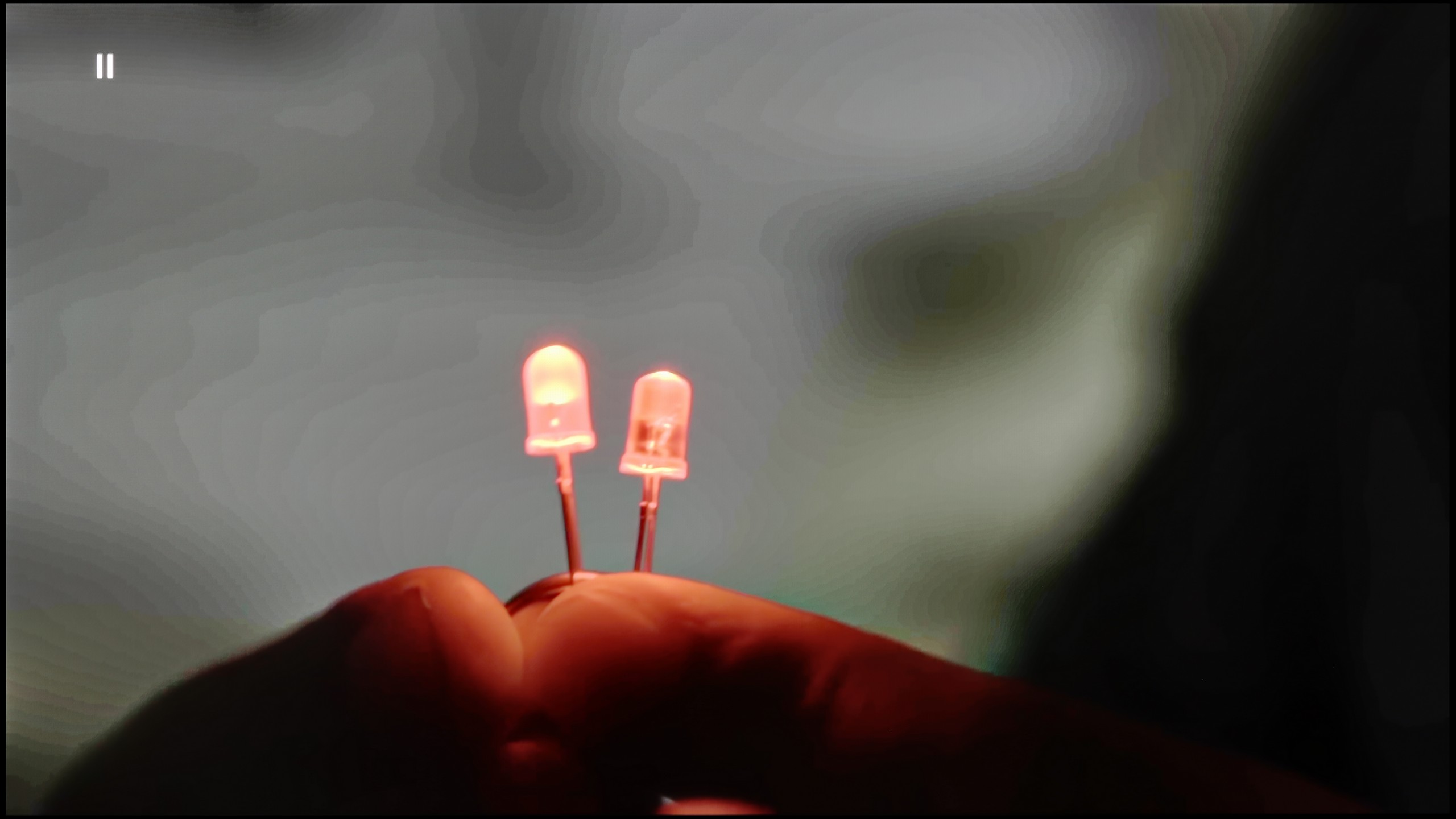
Image without overscan on the SD signal


The Samsung OLED 48 S90D television performs exceptionally well in smoothing tonal transitions. Thanks to the technology used, the transitions between colours are more fluid and natural. It is also possible to utilise the noise reduction feature, which further smooths tonal transitions, which can be useful in some situations. However, it's worth remembering that turning on noise reduction can also lead to the smoothing of desired film grain, which may reduce the cinematic feel of the picture. For this reason, caution is advised when using this feature, as it's better to leave the natural grain that adds character and authenticity to the content being viewed.
Samsung, as always, does not disappoint, and in terms of scaling images from lower resolutions, it performs excellently. The S90D OLED 48 Samsung television effectively processes lower resolutions, as seen in the visible photo. The outline of the model is clear and correct, making it look natural and detailed. Furthermore, the branches of the trees are well reproduced, showing no significant jaggedness that could detract from the image quality. Thanks to effective scaling, even lower resolution materials look attractive on the screen, satisfying users who prefer diverse content sources such as regular antenna/cable television.
LG C5 handles lower quality materials exceptionally well. One of the main issues that older WOLEDs faced was posterisation – unwanted “steps” in colour transitions. The C5 utilises a system function that smooths these transitions, and it works surprisingly effectively. The banding effect is nearly completely eliminated, and the image gains consistency. Compared to last year's model, we feel that this function operates slightly weaker – but the good news is that it doesn't compromise the image structure. Film grain, textures, and details remain on the screen – nothing is forcefully smoothed out.
The C5 also excels at enhancing the quality of older recordings. Thanks to the α9 Gen6 (8th gen) processor, "scaling to 4K" is impressively solid. The image is clear, details are sharp, and the only minor drawback might be a slightly noticeable aliasing on some edges. However, there is no problem with overscan here – the image is not artificially cropped or shifted, which is a significant plus and still not a given.
Blur and motion smoothness
8.5/10
8.5/10

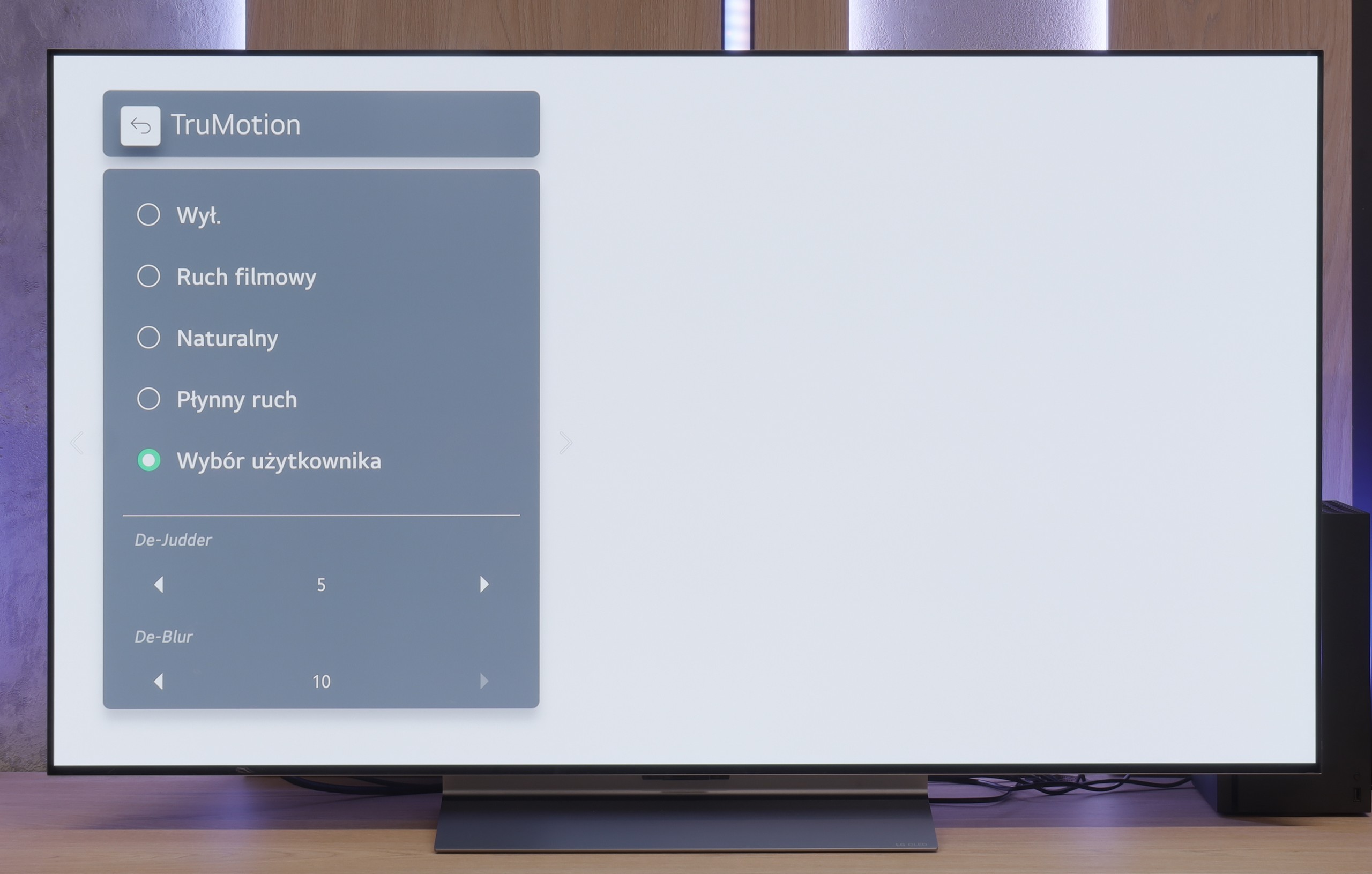
Blur (native resolution, maximum refresh rate):






The S90D television is equipped with a 120 Hz panel, with the ability to "overclock" to 144 Hz with the right PC configuration, providing exceptional motion smoothness. Samsung has been offering a variety of image clarity settings on a ten-point scale for years, allowing users to customise the display to their preferences. In the UFO test, thanks to the use of an OLED panel, there's no question of any ghosting. The response time of the pixels is instantaneous and perfectly captures dynamic movements. In this aspect, OLED technology is considered one of the best on the market. The picture is extremely sharp and detailed, even during fast action, making the S90D OLED 48 Samsung television the perfect choice for gamers and sports enthusiasts.
The LG C5 is equipped with a 144 Hz display, and this, combined with virtually zero response time of the OLED pixels, makes it one of the best screens for watching dynamic content. It doesn’t matter whether it’s sports, fast-paced games, or just action – the image is razor sharp.
And what about movies at 24 frames? LG has thought of that too. The built-in "TruMotion" smoother allows you to adjust the picture to your own preferences. The “de-judder” slider increases fluidity in films, while “de-blur” subtly reduces motion blur – although to be honest, it’s practically invisible here.
Console compatibility and gaming features
9.5/10
10/10
- ALLM
- VRR
- VRR range48 - 144Hz40 - 144Hz
- Dolby Vision Game Mode
- Correct implementation of HGIG
- 1080p@120Hz
- 1440p@120Hz
- 4K@120Hz
- Game bar

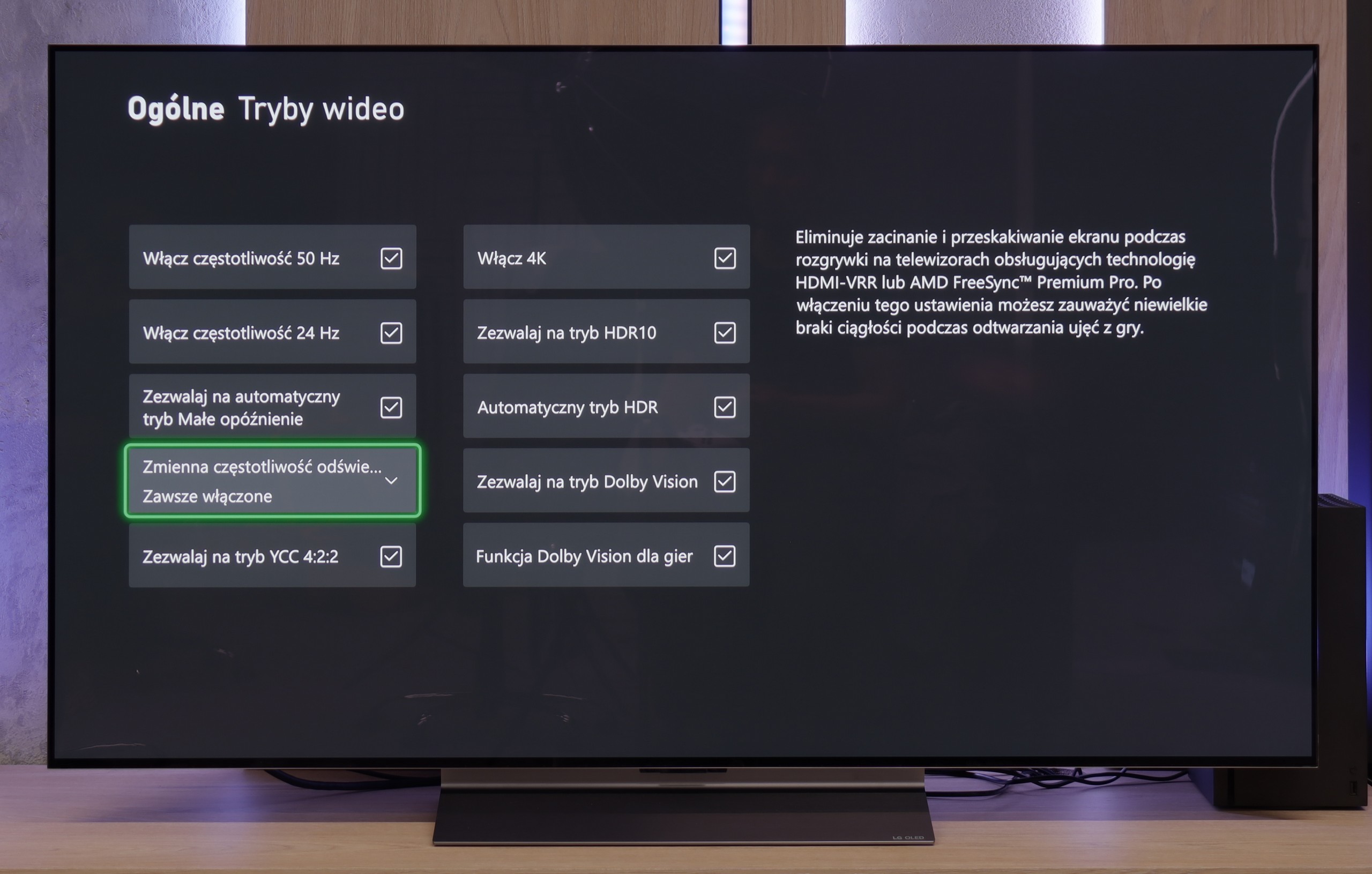

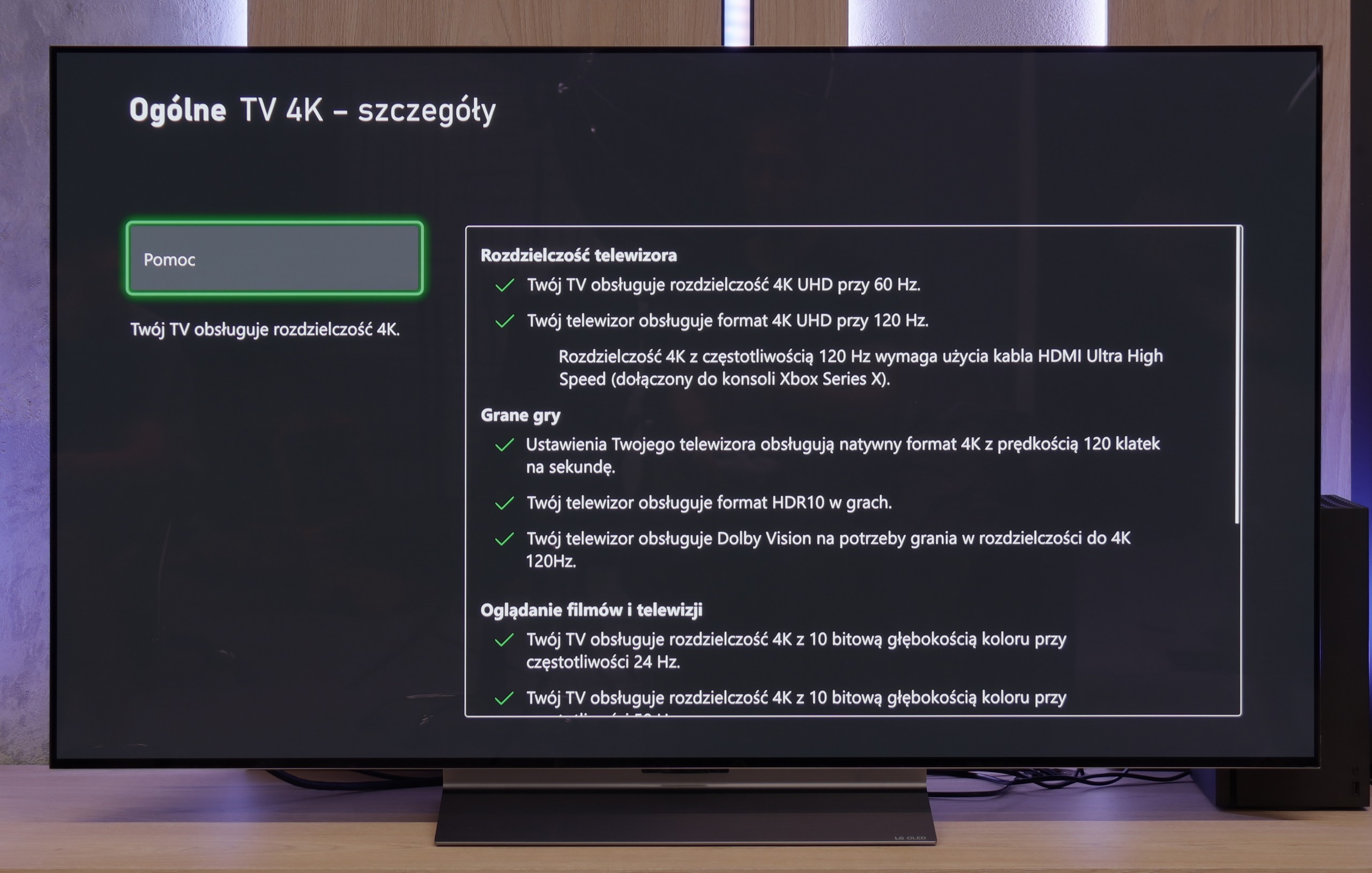

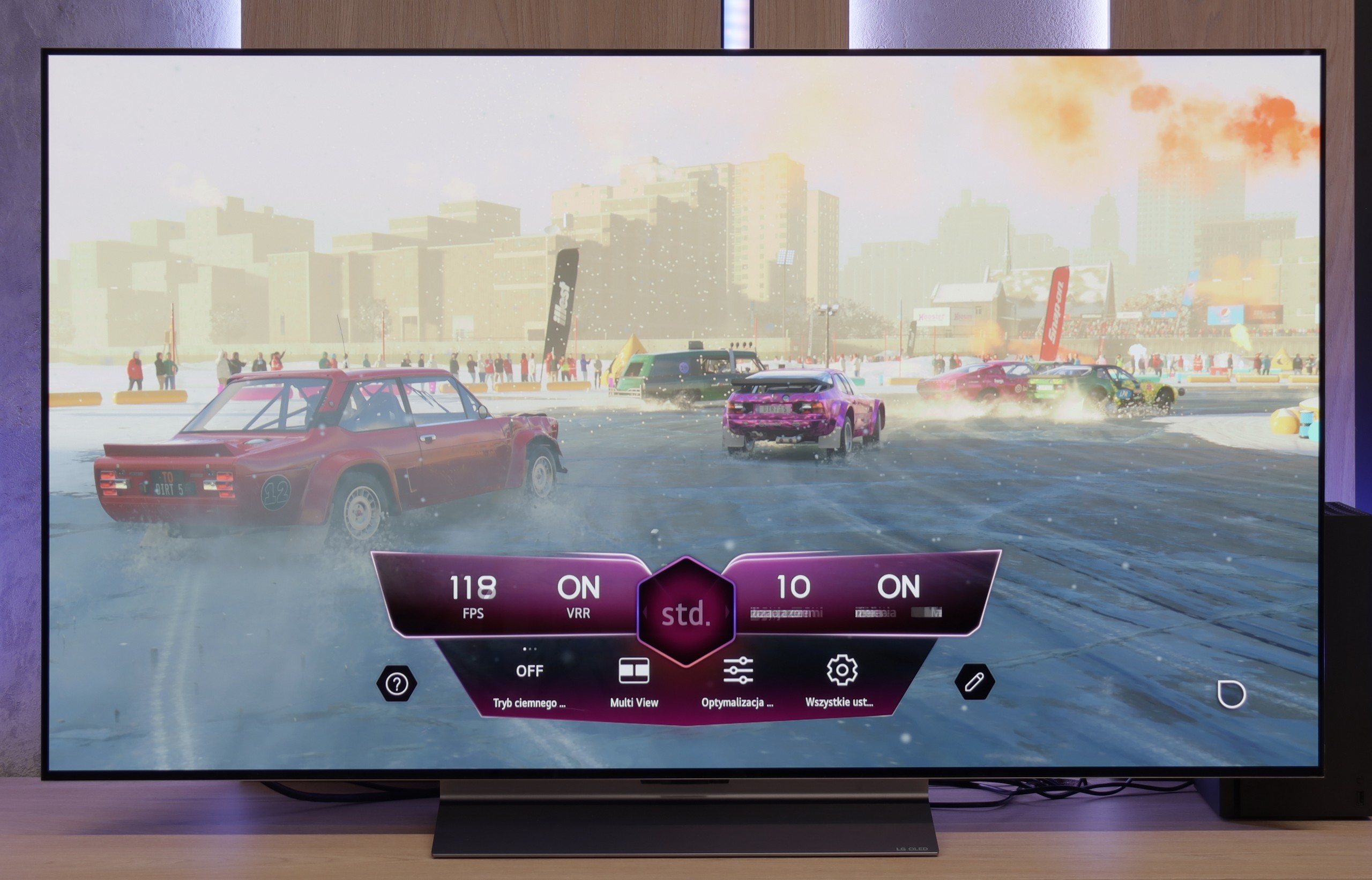

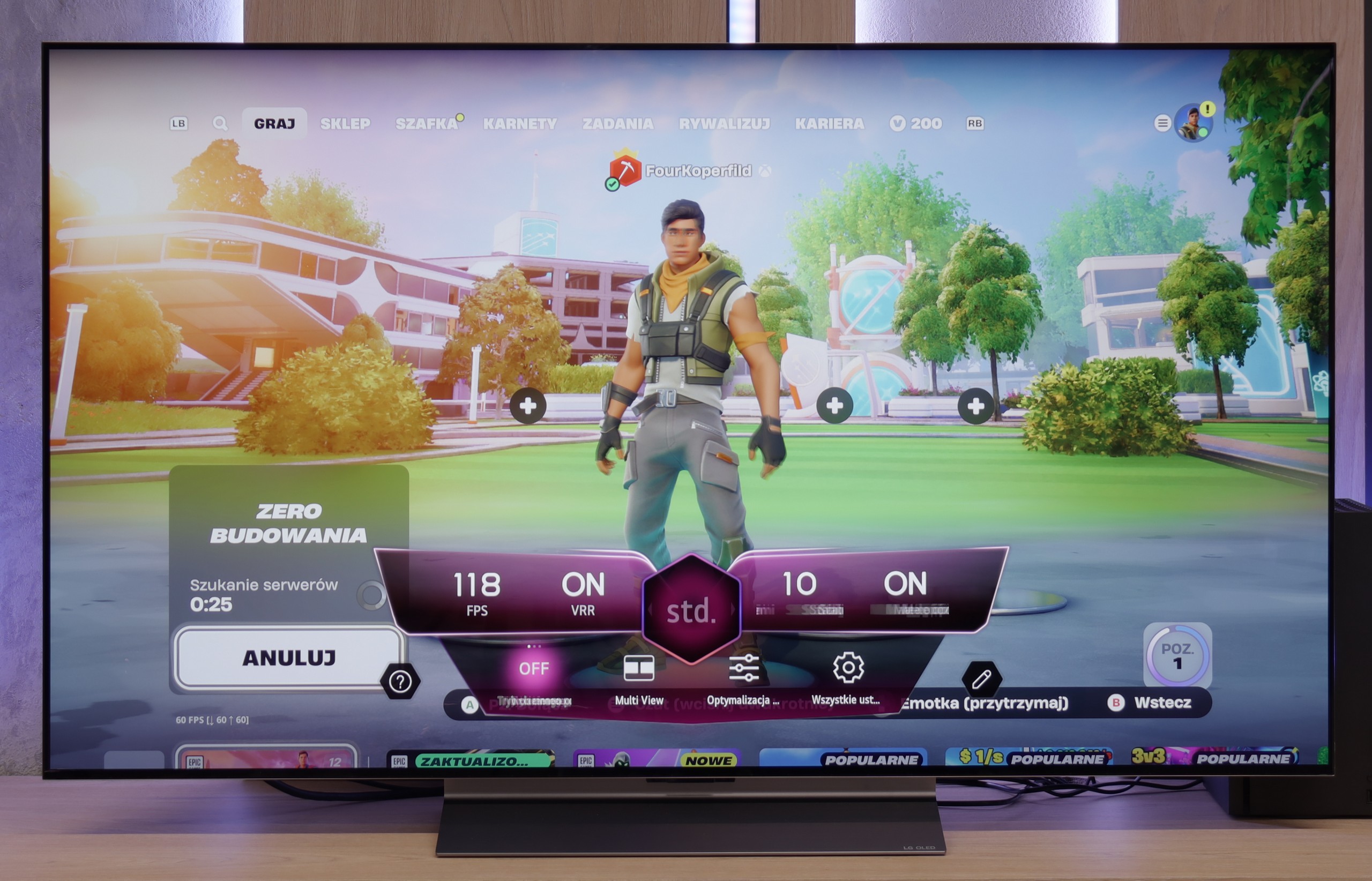
The Samsung OLED 48 S90D television is well-suited to the needs of gamers, offering four HDMI 2.1 ports that support features such as Auto Low Latency Mode (ALLM), Variable Refresh Rate (VRR), and HGIG (HDR Gaming Interest Group). With these technologies, gamers can enjoy smoother gameplay and faster on-screen response, significantly enhancing comfort during long gaming sessions. Additionally, the Game Bar feature allows for easy adjustment of settings, such as aspect ratios, which can be particularly useful in different types of games. For PC users, the television offers an impressive refresh rate of 144Hz, and Nvidia and AMD graphics cards support G-Sync and FreeSync, further improving image smoothness. Although the lack of Dolby Vision support may be a drawback, it's worth noting that in gaming, this technology is not as widely used as in films. Nevertheless, the S90D still offers excellent features for gamers, making it a great choice for those seeking high-quality visuals and advanced gaming technologies.
LG C5 is a TV designed with gamers in mind – and there's not a hint of exaggeration in that. It's hard to find anything to criticise here. We have a refresh rate of 144 Hz, full support for VRR, ALLM, and as many as four HDMI 2.1 ports with full bandwidth of 48 Gb/s. For those who have an Xbox, PS5, Nintendo, and a gaming PC in one room – no limitations, everything can be connected without any hassle.
Configuring HDR for gaming is also straightforward. The TV correctly supports the HGiG mode, which allows you to achieve an image that aligns with the creators' intentions. For those interested, there is also Dolby Vision in the Gaming version, although we still recommend HGiG as the most predictable and "clean" variant of HDR in games.
It also includes the Game Bar, which is a "command centre" for the gamer. Everything important, from VRR settings, picture modes, to frame rate information – is at our fingertips. The interface is simple and clear. It may look like something out of a space simulator, but it serves its purpose and just works; exactly as it should.
C5 is truly a complete package for any gamer.
Input lag
10/10
10/10
SDR
HDR
Dolby Vision
Samsung's OLED features an almost reference-level low input lag, regardless of resolution and refresh rate, in both SDR and HDR modes. Results around 10 ms are truly impressive and significantly enhance the gaming experience. Such a low input lag ensures immediate response to on-screen actions, which is crucial in fast-paced games where every millisecond counts. This allows users to enjoy smoothness and precision, making the S90D TV an excellent choice for those who prioritise gaming performance.
The response time of the LG C5 to our movements with the controller is exemplary. Regardless of the chosen resolution or frame rate – the lag is so low that it is virtually unnoticeable in practice. Playing on this television is simply a pure pleasure. Some delay is introduced by the Dolby Vision mode, which shouldn't be surprising – this applies to almost every television on the market equipped with this mode. Nevertheless, even with Dolby Vision active, the input lag remains low enough that gameplay is still smooth and responsive.
Compatibility with PC
8.6/10
8.6/10

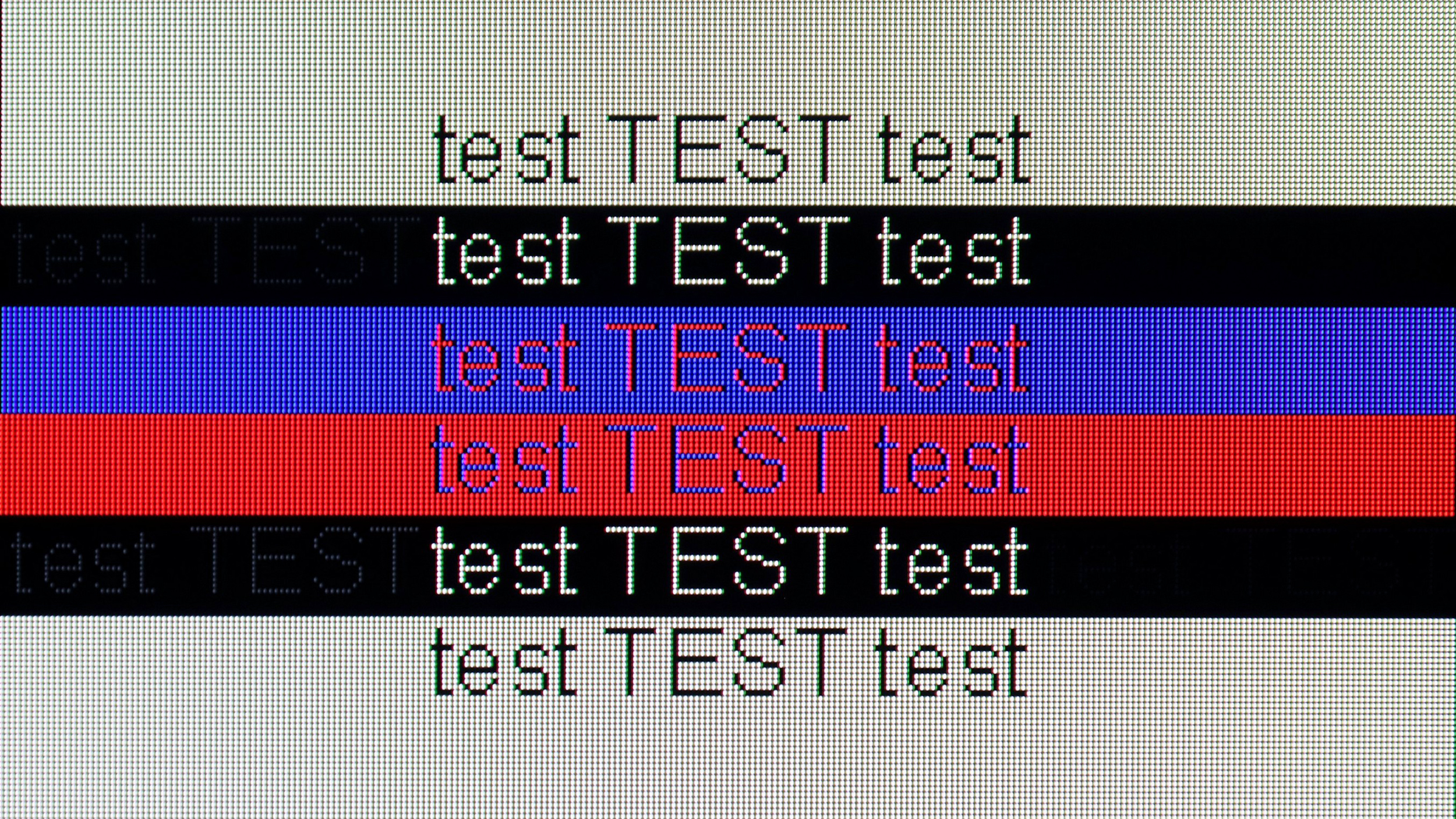
The Samsung OLED 48 S90D TV works perfectly with a PC. Fonts are clearly visible, making it easier to read text and use applications. Additionally, it supports chroma 4:4:4 at 4K resolution and a refresh rate of 144 Hz, ensuring full colour reproduction and image sharpness. It's worth noting that the input lag of just 5 ms is extremely advantageous, particularly for gamers and professionals working with graphics. With such low latencies, using the TV as a monitor becomes a pleasure, allowing for comfortable and responsive work. The S90D TV is an excellent choice for users seeking performance and quality in everyday computer use.
C5 – as we mentioned – is a television created for gamers, so playing even on a computer is an absolute pleasure. The 144 Hz panel, low input lag, and original G-Sync certification just confirm this.
When it comes to work – it's also very good. The fonts are readable, the interface clear, however, it's worth remembering that we are dealing with a WOLED panel and a WRGB subpixel arrangement (slight shadows visible behind the font). So, if someone plans to place the C5 on a desk in smaller sizes like 42 or 48 inches for everyday office work, it’s worth checking it out for yourself first. For occasional desktop use and primarily for gaming – there are no reasons to be concerned.
Viewing angles
7.2/10
7.4/10
The viewing angles on the S90D television, thanks to OLED technology, are unmatched. OLED offers excellent colour and contrast reproduction, even at wide viewing angles, making the picture remain sharp and vibrant from almost any perspective. Users can enjoy a consistent visual experience, regardless of where they are watching the screen.
The viewing angles on the LG C5 are nearly ideal. While they fall slightly short of technologies like QD-OLED or WOLED with MLA micro lenses, the picture quality at wide angles still makes a great impression. Colours remain vibrant, and the screen doesn't lose much brightness even when set at a more challenging angle.
Addressing questions that circulated last year regarding the C4 model – in the case of the C5, we did not notice any green tinting, pinking, or other effects that can be read about online. The picture at an angle looked really clear.
TV efficiency during daytime
5.4/10
6.2/10

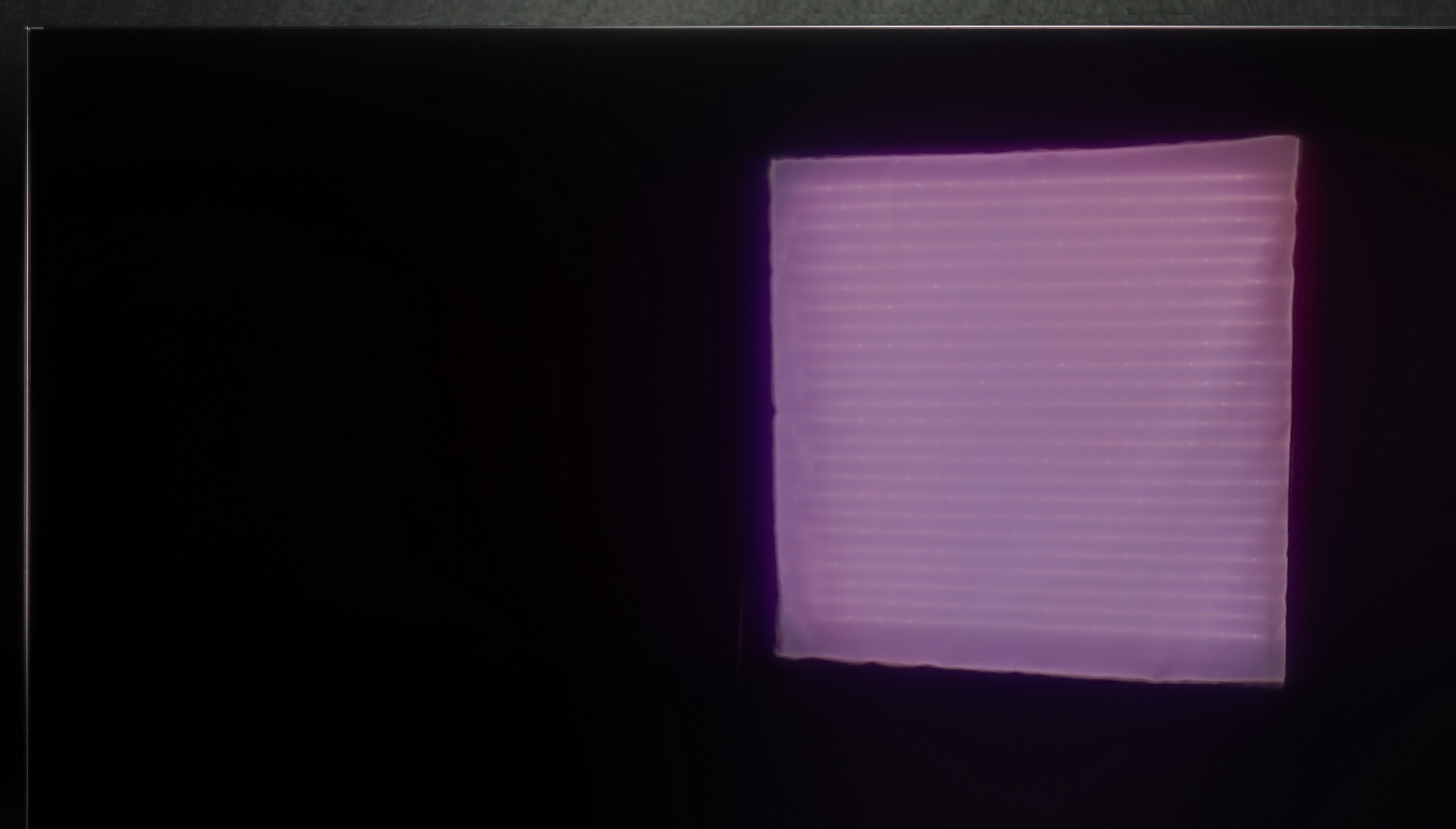

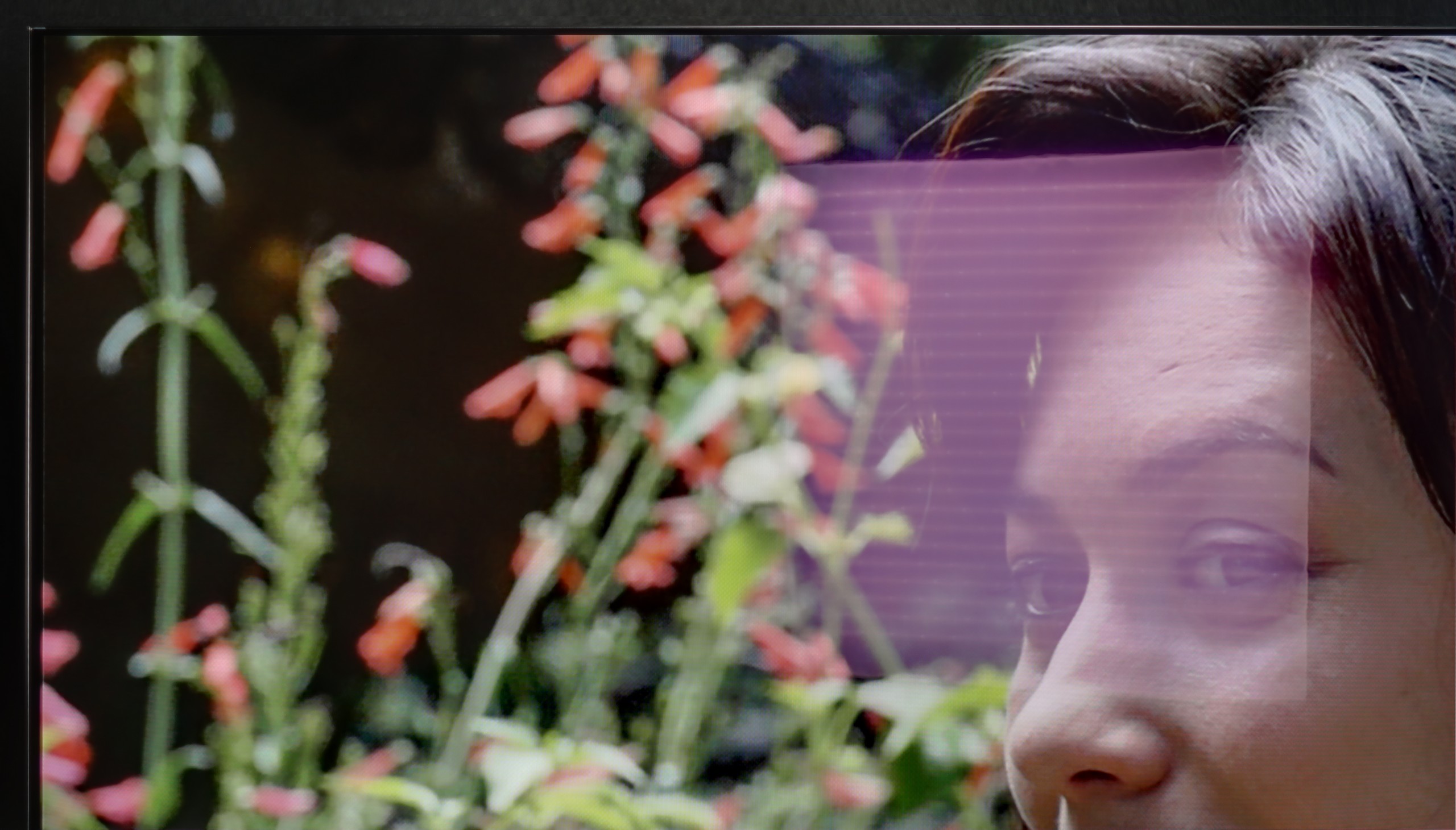
Matrix brightness
Average luminance SDR
LG OLED C5: 435 cd/m2
Samsung S90D / S94D 48" (WRGB OLED): 320 cd/m2
While watching during the day, the Samsung OLED 48 S90D performs very well, achieving an average brightness of around 320 nits, which is a decent result for OLED technology in a 48-inch size. Thanks to the satin panel, reflection suppression is at a reasonable level, allowing for comfortable viewing even in bright rooms. The only noticeable downside of this technology, and not the television itself, is the brightness at 100% white screen fill. In such conditions, OLED may struggle to achieve extremely high brightness. Situations like this can be observed when we want to watch winter sports, e.g., ski jumping.
LG C5 is one of the brighter OLED TVs on the market, so it should perform well in moderately bright rooms without major issues. The average brightness in SDR mode is around 450 nits – a value sufficient for the picture to remain readable even during the day. Importantly, the black does not lose depth and does not turn "grey," which can still be a problem with QD-OLED panels.
Reflections, however, may pose a greater challenge. The WOLED panel used in the LG C5 has a glossy coating typical of this technology, which only partially diffuses reflections. In a well-lit living room with large windows, you can see your reflection on the screen – slightly muted but still visible. In a very sunlit room, it may turn out that blinds or curtains are necessary to fully enjoy the great picture quality.
Details about the matrix
Subpixel Structure:

Panel uniformity and thermal imaging:

TV features
7.4/10
7.9/10
- HDMI inputs0 x HDMI 2.0, 4 x HDMI 2.1 48Gbps0 x HDMI 2.0, 4 x HDMI 2.1 48Gbps
- Other inputsIR (remote)
- OutputsToslink (Optical audio), eARC (HDMI), ARC (HDMI)Toslink (Optical audio), eARC (HDMI), ARC (HDMI)
- Network InterfacesWi-Fi 2.4GHz, Wi-Fi 5GHz, Ethernet (LAN) 100MbpsWi-Fi 2.4GHz, Wi-Fi 5GHz, Ethernet (LAN) 100Mbps
- TV receptionDVB-T, DVB-T2, DVB-S, DVB-S2, DVB-CDVB-T, DVB-T2, DVB-S, DVB-S2, DVB-C
Classic features:
- Recording to USB (terrestrial TV)
- Recording programming
- Picture in Picture (PiP)
- RF remote control (no need to aim at the screen)
- Backlit remote control
- Teletext
- Audio only mode
- Bluetooth headphones support
- Simultaneous Bluetooth headphones & TV audio
Smart features:
- AirPlay
- Screen mirroring (Windows Miracast)
- Wyszukiwanie głosowe
- Voice search in native language
- Ability to connect a keyboard and mouse


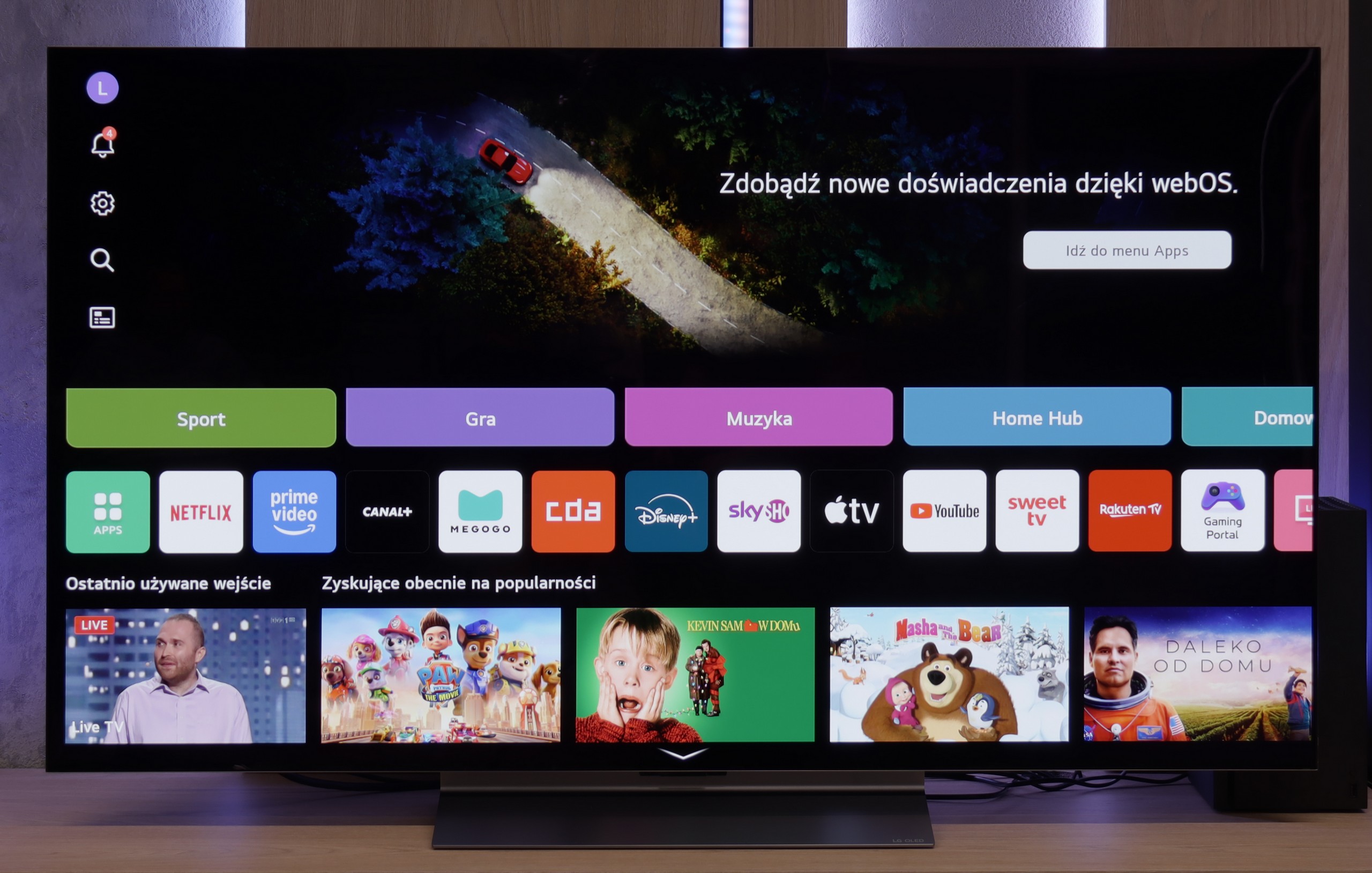
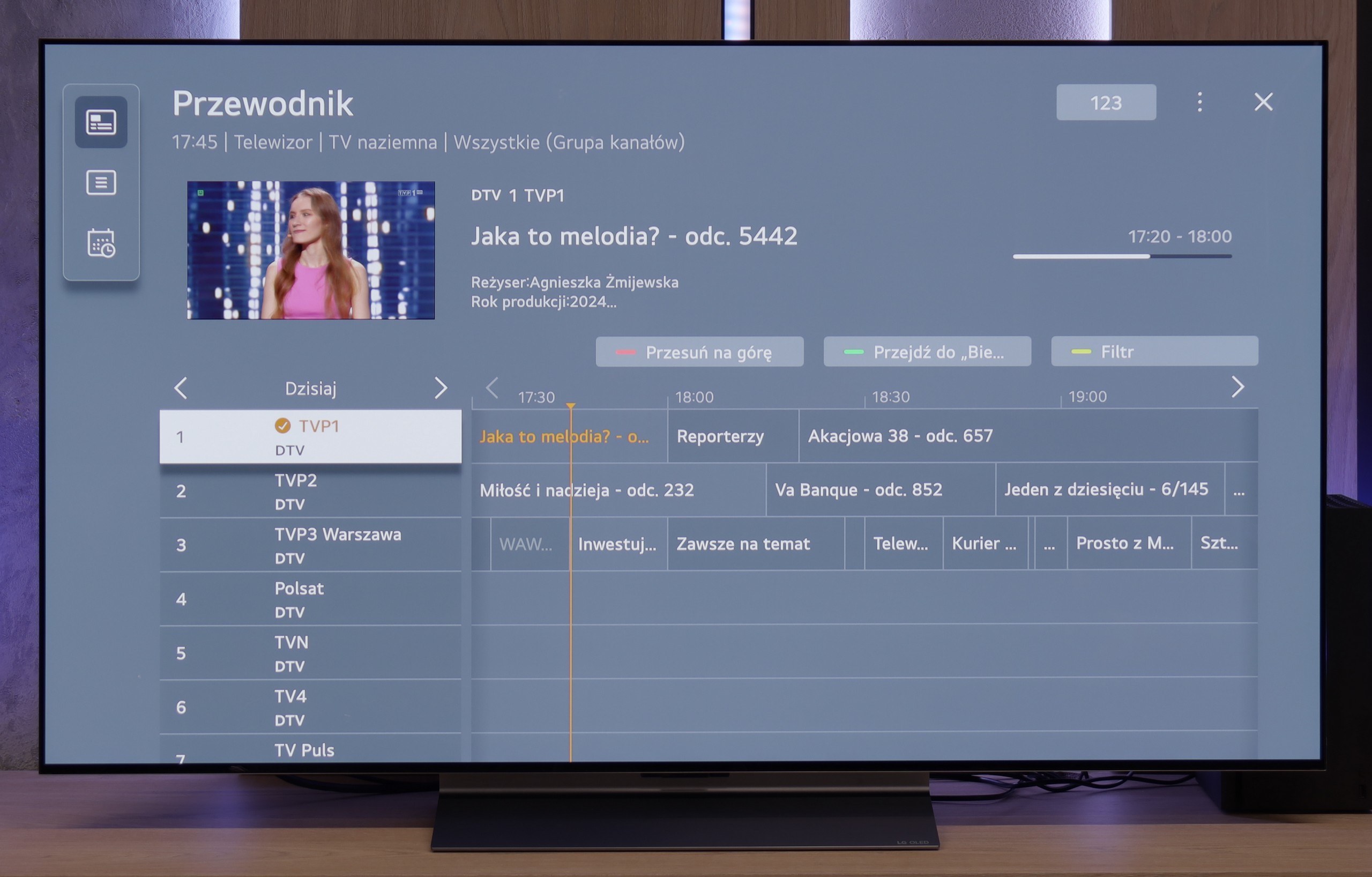
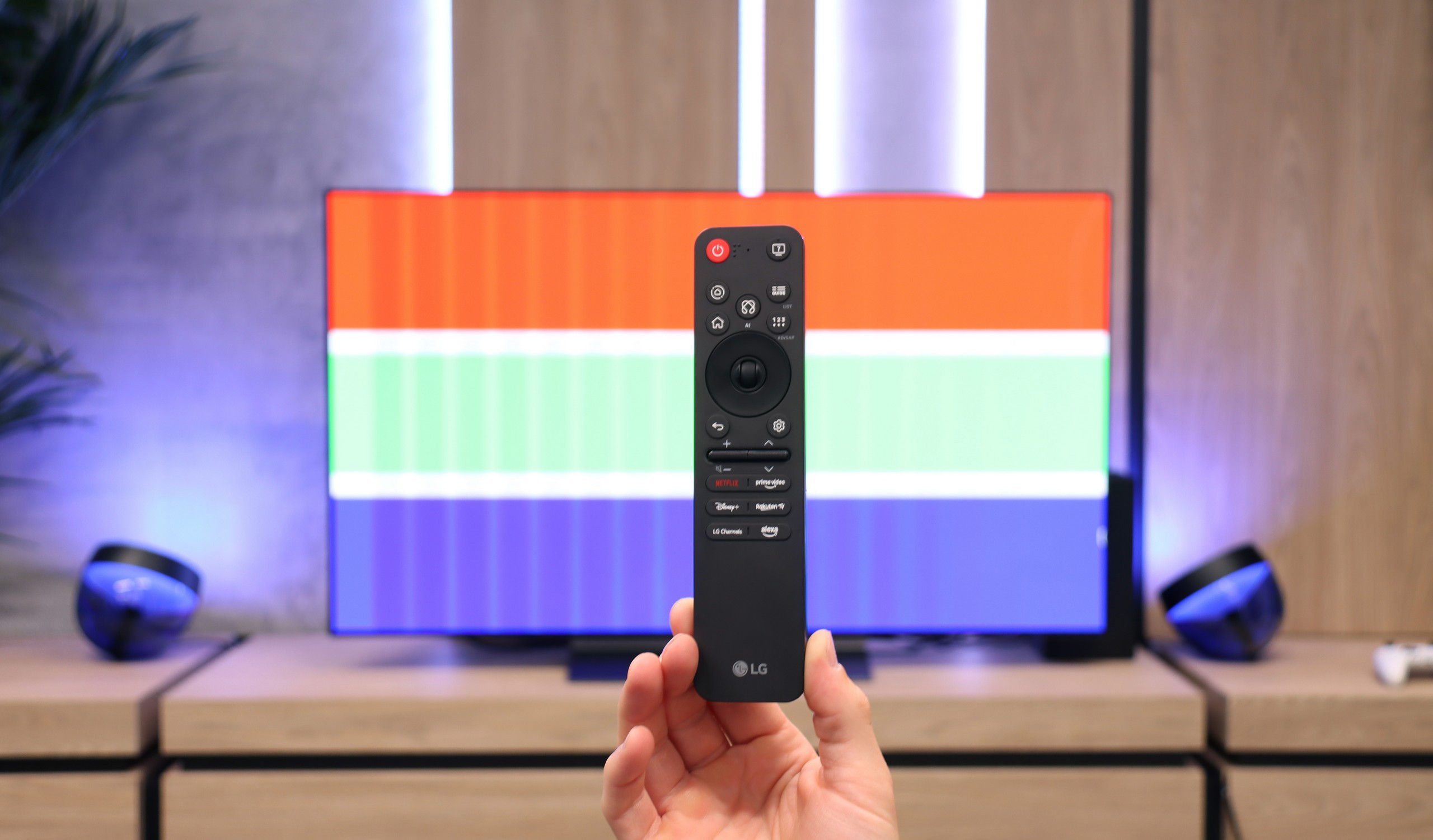
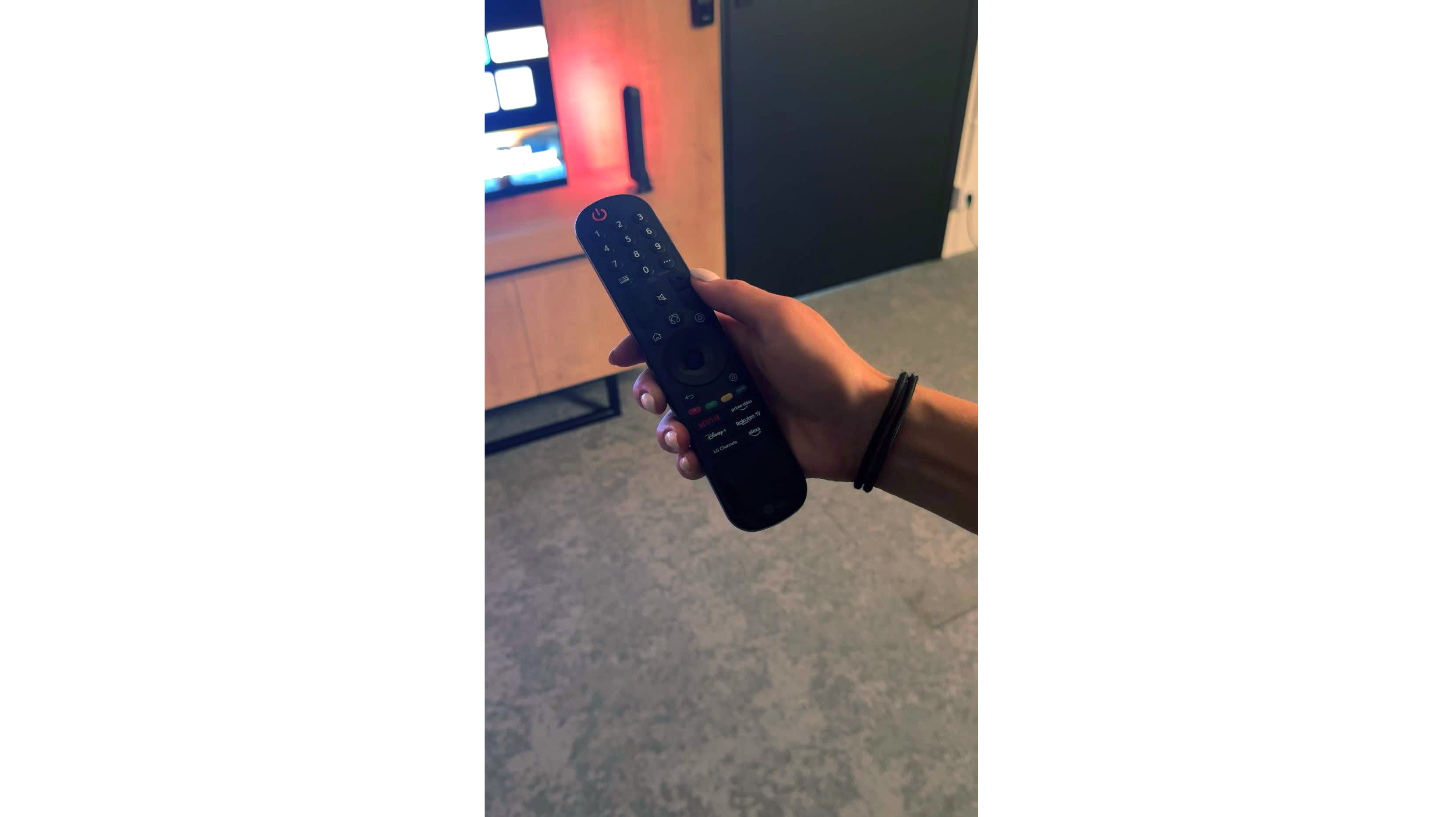
The Samsung OLED 48 S90D television offers a range of features that significantly enhance user comfort and make it the ideal device for entertainment in the comfort of your home. The Tizen system, which this model is based on, is a modern and advanced platform that provides users with an intuitive and smooth experience. Thanks to its user-friendly interface, navigation through apps and settings is quick and intuitive, making it easier for even those less familiar with technology to use the television. Tizen supports a rich set of applications, including all popular streaming services such as Netflix, YouTube, and Amazon Prime Video. A new feature for 2024 is also the availability of voice search in Polish. It's also worth noting the eco-friendly solar remote, which is not only environmentally friendly but also practical for everyday use. For example, the remote can control multiple devices connected to the television, so we don’t have to use multiple remotes. Additionally, the television supports AirPlay, enabling easy content streaming from Apple devices like the iPhone or iPad. The S90D OLED 48 also allows for the connection of various Bluetooth devices, such as mice, keyboards, or headphones, which increases its versatility and allows for personalised user experiences. As a result, users can easily adjust their settings to make the most of the television's capabilities. The only downside that can be pointed out is the lack of USB recording support. For some users, this may pose a limitation, especially in the case of wanting to archive their favourite shows or movies. Despite this, the S90D television offers many advanced features and technologies that make it an excellent choice for anyone looking for high-quality entertainment in their home.
Classic TV Features:
In terms of classic TV functionalities, the LG C5 performs really well. Here, we have the option to record programs to USB from built-in DVB-T(2) tuners, support for teletext, an EPG channel list, and seamless pairing of headphones via Bluetooth. For many users, these are still very important elements of everyday TV use – and LG doesn’t fall short in this area, except for the PIP function. It is worth noting the topic of the remote, or rather... the different versions of the remote. In our test, we used the C54 model, which is equipped with the new version of the Magic remote. It somewhat resembles Samsung's minimalist approach – there’s no numeric keypad or "source" button, but it looks modern and is comfortable for everyday use. Conversely, other variants, such as C5ELB, may be sold with an older version of the remote – a more classic one, with more buttons and a numeric keypad. Some may consider it more practical, while others see it as outdated. In short: quite a bit of confusion, so it's worth checking the model suffix before purchase.
Smart TV:
Regardless of the version of the remote, we’re operating the same system – WebOS. This is one of the most enjoyable solutions in the Smart TV world. The intuitive menu, fast performance, and support for popular features, such as AirPlay, screen mirroring, or voice assistant, make the system perform very well in everyday use. Additionally, controlling the cursor using the gyroscope in the Magic remote remains one of the most convenient forms of navigation in TVs. There are really quite a few applications here – Netflix, Disney+, HBO Max, Apple TV, and many more. However, one must remember that this is not a system based on Android/Google TV, so it may happen that we simply cannot find some less popular app in the LG store.
Playing files from USB
9.1/10
8.8/10
Supported photo formats:
Maximum photo resolution:

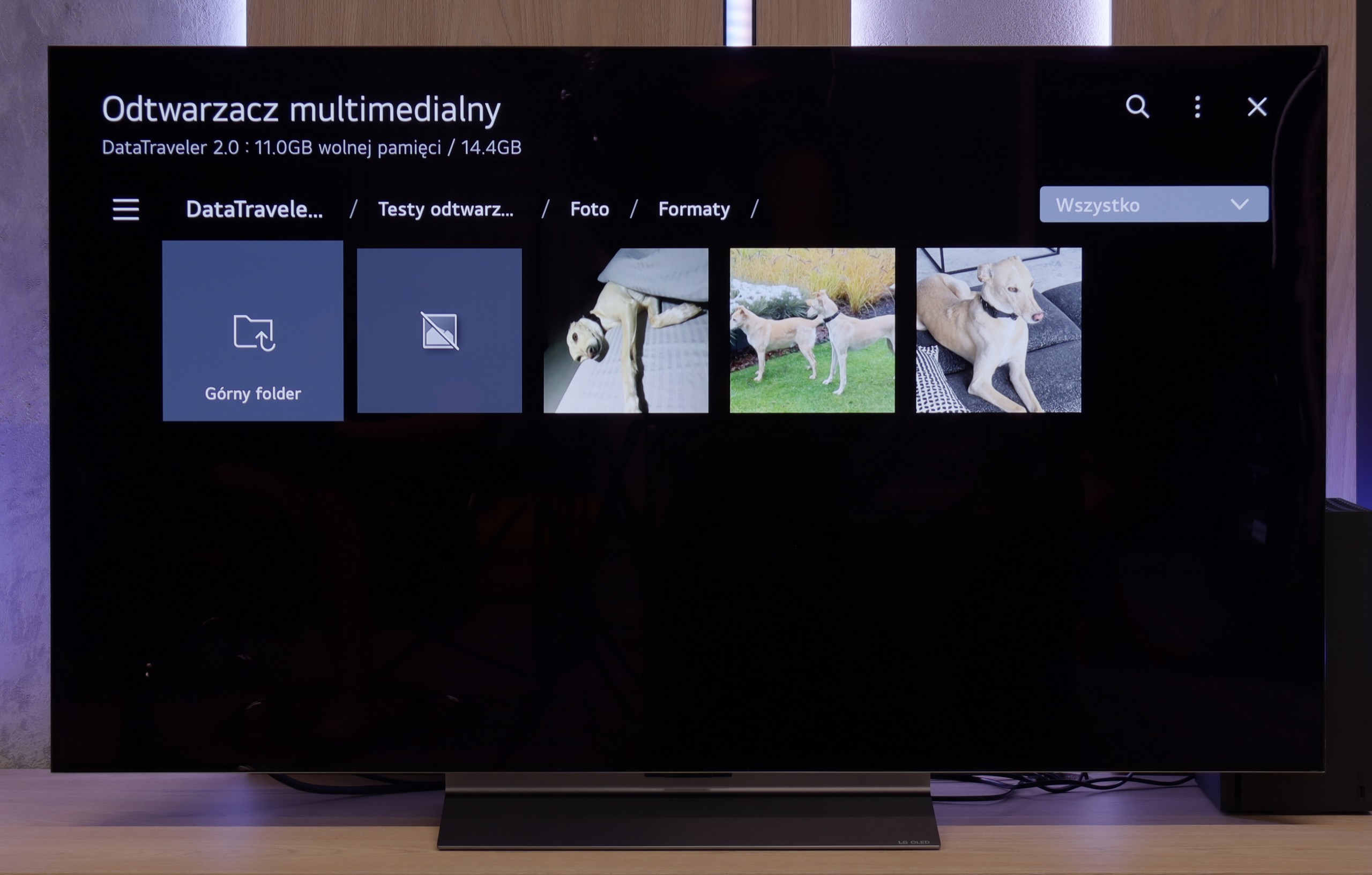
The Samsung S90D comes equipped with a built-in player that supports most popular video formats, allowing for convenient playback of films from various sources. The player also supports subtitles in Polish and enables users to customise the font colour, enhancing comfort while watching content with subtitles. In terms of photo formats, the television handles many of them, however, one of the few downsides is the lack of ability to play the popular PNG format. Nonetheless, the overall file playback capabilities of the S90D are outstanding.
The LG C5 is equipped with quite a decent built-in media player that should meet the expectations of most users. It supports popular video and audio formats, handles SRT subtitle files, and opens most graphic files without major issues.
The interface itself is fairly simple and intuitive – it doesn't surprise, but it also doesn't create difficulties in everyday use. Of course, it's not at the level of external players or apps from Google TV, but for basic playback of films from a USB drive or hard drive – it's more than sufficient.
Apps
8.7/10
9.1/10














































Sound
6.8/10
7.2/10
- Maximum volume--
- Dolby Digital Plus 7.1
- Dolby True HD 7.1
- Dolby Atmos in Dolby Digital Plus (JOC)
- Dolby Atmos in Dolby True HD
- DTS:X in DTS-HD MA
- DTS-HD Master Audio
The Samsung OLED 48 S90D TV delivers good sound quality, with clear and balanced audio. The sound is crisp, and the bass is well-defined, enhancing the viewing experience. Even at maximum volume, the sound remains clear, although the TV itself isn't very loud.
For such a slim television, the LG C5 surprisingly offers quite good sound quality. The thin body manages to house a set of decent speakers that produce clear audio, with well-defined details and – surprisingly – a light but perceptible bass. For everyday viewing, that's more than sufficient, and in many cases, it may even deliver a pleasant surprise. It's just a pity that this year LG decided to completely abandon support for DTS codecs. For most people, this won't be an issue, but if someone uses Blu-ray discs and enjoys that format – especially in its more advanced versions – they may notice its absence. In such cases, an external receiver or soundbar with appropriate audio support is the solution.


